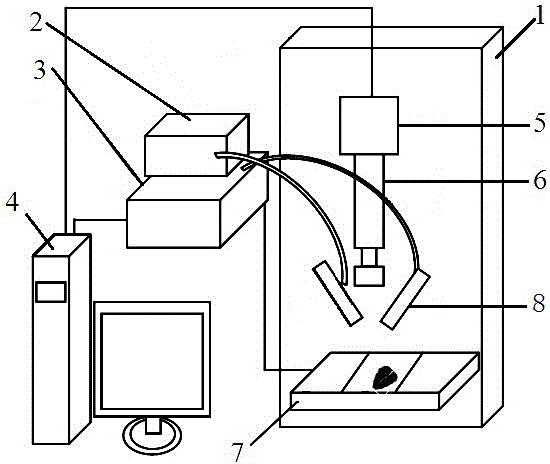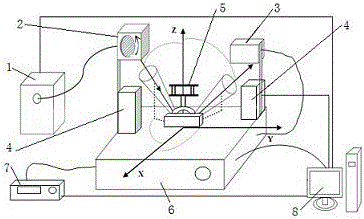Method of Polarization-Hyperspectral Diagnosis of Crop Nitrogen, Phosphorus and Potassium Deficiency
A polarization spectrum and hyperspectral technology is applied in the field of diagnosing the nitrogen, phosphorus and potassium nutrient content of greenhouse crops based on the polarization-hyperspectral technology, which can solve unseen problems and achieve the effects of simple and convenient operation, low resolution accuracy, and crop yield improvement.
- Summary
- Abstract
- Description
- Claims
- Application Information
AI Technical Summary
Problems solved by technology
Method used
Image
Examples
Embodiment Construction
[0035] Taking tomato as an example below, the present invention will be further described in detail in conjunction with the accompanying drawings.
[0036] The hyperspectral image acquisition system adopted in the specific embodiment of the present invention refers to figure 1 . use figure 1 The shown hyperspectral image acquisition system collects hyperspectral images of greenhouse tomato leaves, which includes a near-infrared camera 5 (XEVA-FPA-1.7-320, XenICs, Leuven, Belgium), with a spectral range of 900-1700nm, and an imaging spectrometer 6 (ImspectorN17E, Spectral Imaging Ltd., Finland), the resolution is 5nm, the DC adjustable light source 2 of 150W halogen tungsten lamp (2900-ER+9596-E, Illumination Technologies, Inc., East Syracuse, NY, USA), the displacement unit is driven by a stepping motor 7 (MTS120, Beijing Optical Instrument Factory, Beijing, China) and controller 3 (SC100, Beijing Optical Instrument Factory, Beijing, China), the imaging spectrometer can coll...
PUM
 Login to View More
Login to View More Abstract
Description
Claims
Application Information
 Login to View More
Login to View More - R&D
- Intellectual Property
- Life Sciences
- Materials
- Tech Scout
- Unparalleled Data Quality
- Higher Quality Content
- 60% Fewer Hallucinations
Browse by: Latest US Patents, China's latest patents, Technical Efficacy Thesaurus, Application Domain, Technology Topic, Popular Technical Reports.
© 2025 PatSnap. All rights reserved.Legal|Privacy policy|Modern Slavery Act Transparency Statement|Sitemap|About US| Contact US: help@patsnap.com



